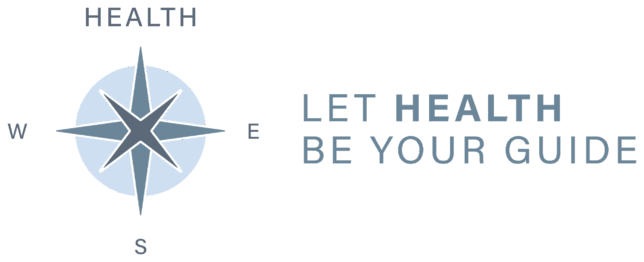When we think about health, we often focus on what we eat, how much we move, how well we sleep, and how we manage stress. But there’s another critical factor that deeply influences our well-being: connection.
We are wired for relationships, and research shows that strong social bonds improve physical health, build mental resilience, support gut health, and even enhance mitochondrial function. In contrast, loneliness and isolation can be as harmful as smoking 15 cigarettes a day (1).
If you want to thrive—not just survive—connection isn’t optional. It’s essential.
The Science of Social Connection & Longevity
The Harvard Study of Adult Development, which has followed participants for over 85 years, found that the strongest predictor of longevity isn’t diet, wealth, or even genetics. It’s the quality of our relationships (2). People with strong, meaningful connections live longer, stay healthier, and report greater life satisfaction.
On the flip side, chronic loneliness increases the risk of heart disease by 29% and stroke by 32% (3). But why is disconnection so damaging?
The Biology of Loneliness
Our bodies are wired for connection. When we lack meaningful relationships, the brain interprets it as a threat—triggering a stress response that can wear down the body over time.
One key player in this process is cortisol, the body’s primary stress hormone. Without the buffering presence of social support, cortisol remains chronically elevated, keeping us stuck in a fight-or-flight state (4). This leads to:
- Weakened immunity, increasing vulnerability to illness
- Chronic inflammation, linked to heart disease, diabetes, and Alzheimer’s (5)
- Disrupted sleep and impaired repair processes
- Accelerated cellular aging and mitochondrial damage (6)
Even your gut microbiome is affected. People with strong social bonds have more diverse and resilient gut microbes. Shared meals and physical closeness expose us to a broader range of beneficial bacteria (7).
Oxytocin: The Healing Hormone
Strong relationships don’t just prevent harm—they actively promote healing. One reason is oxytocin, the hormone released during positive social interactions like hugs, laughter, or kind words. Oxytocin helps lower cortisol, calm inflammation, improve sleep, and support mitochondrial health (4).
That’s why feeling connected isn’t just comforting—it’s physiologically protective.
Connection: The Glue Between Habits
Social connection holds your healthy lifestyle together. When you feel supported, you’re more likely to eat well, move your body, sleep deeply, nurture a positive mindset, and spend time in nature. And when one habit slips, connection helps soften the fall.
Connection doesn’t just lift your mood—it anchors your entire lifestyle.
Small Moments, Big Impact
The good news? You don’t need a partner or large social circle. Even small, genuine moments of connection can buffer stress and boost health.
What matters isn’t quantity—it’s quality. Feeling safe, supported, and understood by even one or two people can regulate your nervous system and act like medicine for your whole body.
Healing Connections Look Like:
- Emotional support: someone who listens without judgment
- Trust and safety: a space to be your full self
- Shared time: a walk, coffee, or simple check-in
- Physical closeness: hugs and touch lower cortisol and release oxytocin
These bonds can come from longtime friends, new community groups, neighbors, therapists—or even a beloved pet. For others, connection may come through nature or spirituality, both of which lower stress hormones and foster resilience (8).
How to Build Connection and Community
Connection doesn’t happen by accident. It’s something we build with small, consistent choices.
Prioritize Meaningful Relationships
It’s not about numbers—it’s about showing up for the people who matter. A “thinking of you” text, a shared walk, or a phone call deepens trust and reminds both people they’re not alone.
Try this:
- Express gratitude to someone who’s supported you
- Listen fully without jumping in to fix
- Ask, “How are you really doing?”
Engage in Shared Purpose
Belonging grows in groups with shared goals. Join a hiking group, spiritual community, volunteer cause, or class you attend regularly.
Start small:
- Join a community garden
- Volunteer once a month
- Take a weekly class where you see the same faces
Group membership has been shown to reduce inflammation and boost immune markers (9).
Cultivate Everyday Connections
Even brief interactions—chatting with your barista, greeting a neighbor, smiling on your commute—can lift mood, increase serotonin, and create a sense of belonging.
Try this:
- Put your phone away at checkout and talk to the cashier
- Greet someone on your walk
- Ask a coworker something beyond work
These micro-connections are the roots of community.
Be Fully Present
Social media can simulate connection while increasing loneliness. Real connection requires presence—eye contact, curiosity, and time without distraction.
Try a mini digital detox:
- Keep phones off the table during meals
- Schedule weekly screen-free time with someone
- Practice active listening: don’t just wait to speak—stay curious
Start Small, Show Up Often
Connection doesn’t require charisma or a packed calendar—just intention. Choose one small action today and keep showing up. These small gestures are the foundation of community, meaning, and well-being.
The Power of Connection
Health is more than food, sleep, and movement. It’s about feeling connected—to people, purpose, nature, or something greater. Connection ties it all together.
Whether it’s a shared laugh, a walk with a neighbor, a moment of presence, or time in nature, these experiences ripple through your entire health.
You don’t need a big network. You just need to show up—authentically, consistently, and with an open heart.
Start where you are. Reach out. Be present.
And remember: healing doesn’t happen in isolation. It happens in connection.
Let health be your guide. Life is a journey—don’t walk it alone.
Scientific References
1 Holt-Lunstad, J. et al. (2010). Social relationships and mortality risk: A meta-analytic review. PLoS Medicine.
2 Waldinger, R. & Schulz, M. (2023). The Good Life: Lessons from the Longest Study on Happiness. Harvard Study of Adult Development.
3 Valtorta, N. et al. (2016). Loneliness and social isolation as risk factors for coronary heart disease and stroke: systematic review and meta-analysis. Heart.
4 Cole, S. et al. (2015). Social regulation of gene expression in human leukocytes. Genome Biology.
5 Cacioppo, J.T. et al. (2015). Loneliness and health: Potential mechanisms. Annual Review of Psychology.
6 Picard, M. et al. (2014). Mitochondrial responses to psychological stress. PNAS.
7 Foster, J.A. et al. (2017). Social behavior and the microbiome. Neuroscience & Biobehavioral Reviews.
8 Koenig, H.G. (2012). Religion, spirituality, and health: The research and clinical implications. ISRN Psychiatry.
9 Seeman, T. et al. (2020). Social integration and biomarkers of health. American Journal of Public Health.

